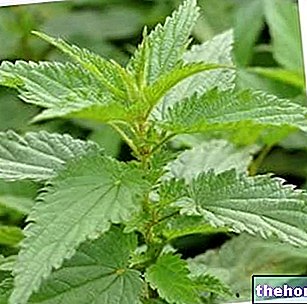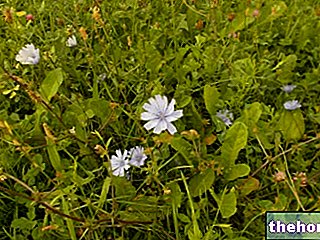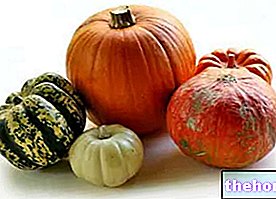Generality
Asparagus is a food of vegetable origin that can be classified in the group of vegetables or vegetables. These are sprouts (shoots) green or white (depending on whether they are grown in the presence or absence of light), which require a fairly complicated cultivation.

The developed asparagus could be described as a rustic rhizomatous plant, with erect and branchy herbaceous stems without thorns (round bush with almost needle-like leaves), which have white flowers that turn into red berries; at the same time, the asparagus have a horizontal and underground stem (rhizome or legs), from which the edible shoots or shoots emerge.
Asparagus, in addition to requiring a totally compatible soil (very draining and worked), must be picked as soon as the tip of the shoot appears (which has an overall length of about 20cm, almost completely hidden by the ground). In fact, if you wait for the latter to grow further, you get a thickening of the bark and the consequent reduction of the edibility and pleasantness of the food.
The "cultivated" asparagus belongs to the family of Liliaceae, Type Asparagus, Species officinalis, of which some varieties are identified. In Italy (but not only) a wild species of asparagus grows called "Asparagus acutifolius", commonly referred to by the term asparagine (available in spring). Very similar to the latter, it is the sprout of the butcher's broom (binomial nomenclature: Ruscus aculeatus); they are thin and long twigs with an intense and bitter taste (hence the vulgar term abrupt), which sprout from the ground near the mother plant (therefore similarly to the asparagine). Knowing the appearance of the adult wild asparagus (filamentous bush) it is however quite difficult to confuse them with the butcher's broom (bush with flat, wide and pointed leaves).
Asparagus originates from western Asia (perhaps from Iran) and represents a cultivation that man has mastered since ancient times. First the Egyptians, then the Romans (quoted by Pliny the Elder in the "Naturalis Historia"), collectors and farmers, have perfected the cultivation; asparagus are also mentioned in several Greek texts: "History of plants" by Theophrastus, "De agriculture" by Cantone etc. In the Middle Ages, the cultivation of asparagus was basically prolonged to use the shoots and the roots for medicinal purposes (hence: A. officinalis).
In Italy, in addition to observing a significant density of A. acutifolius, in the areas interposed between the coast and the "sub-mountain area (Apennine belt) it is possible to find in the wild also the"A. officinalis (absent in Sardinia).
The cultivation of asparagus must also face the infestation of some parasites; to produce these vegetables it is therefore necessary to make sure that in the field do not appear: cryocere beetles, asparagus flies, asparagus rust (fungus) etc.
Useful information
Asparagus boast excellent nutritional properties (fiber, vitamins and mineral salts); moreover, both the edible bud and the roots of the plant (in decoction), significantly stimulate renal filtration. This aspect, which for many represents a metabolic value due to the "abundance of some mineral salts, for others it is the result of the interaction between some molecules present in the asparagus and the kidneys, which is why the vegetable is NOT uniquely considered advisable in the" power supply of nephropathic.
As if that were not enough, due to the high purine concentration, asparagus is a food to be absolutely AVOIDED in case of gout or hyperuricemia that is difficult to compensate; it does not matter if they have diuretic properties, they can favor the onset of gouty acuities in predisposed subjects and as such they are to be EXCLUDED.
Due to the significant concentration of aspartic acid and sulphurous groups, asparagus immediately gives a rather intense odor to the urine. This feature, which apparently is not totally univocal, has been the subject of some scientific studies. It seems that the discrepancy between the smell of urine in the various subjects is not due to the presence or absence of certain catabolites, but to the ability to perceive them by smell; in this regard, some researchers have found the presence of a slice of the population, corresponding to 40% of the total, which is NOT able to perceive the typical smell of urine after ingesting asparagus.
This reaction, which occurs even after a few minutes in healthy subjects, has long been considered a simple method to monitor the efficiency of renal filtration; obviously, the system cannot work in the aforementioned 40% of subjects unable to perceive its smell.
To learn more, read: Asparagus in Herbalist - Property of Asparagus
Preparation and Recipes
The culinary preparation of asparagus is quite simple but still requires some attention.




























